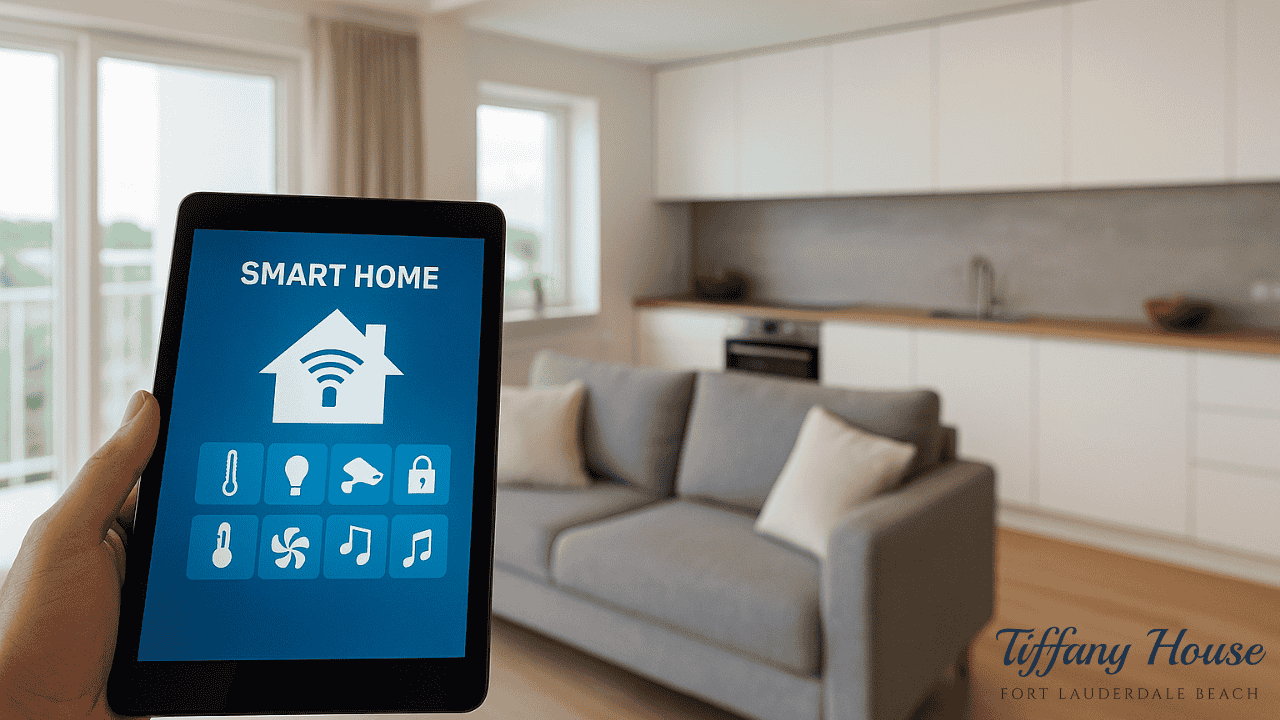Is your next home really worth more because it’s smart? If two homes look identical on paper, would you pay more for the one that lowers your bills, prevents leaks, withstands outages, and allows you to control everything from your phone?
Most buyers would, and that behavior change transforms how properties are valued and marketed.
This guide explains how smart-home technology translates into real money, how appraisers and buyers view it, and which upgrades affect price, market days, and rent.
Why Smart Tech Now Commands a Premium
Technology adds value in four ways: it reduces operating costs (think energy and insurance), cuts risk (fewer claims from leaks or break-ins), elevates daily experience (lighting, audio, comfort), and expands buyer demand (EV-ready, fiber internet, whole-home backup).
When more buyers want the home and the ownership math improves, the market starts to place a premium on the asset, not just the gadgets.
The Smart-Home Value Stack
1) Connectivity: Homes with reliable fiber or multi-gig service, whole-home Wi-Fi, and ethernet to TVs/offices show better during tours and appraisals. Buffering is a deal killer; documented speeds are a selling point.
2) Comfort & efficiency: Smart thermostats, motorized shades, zoning, and intelligent ventilation reduce energy use and stabilize indoor temps big credibility for modern construction and retrofits alike.
3) Safety & security: Video doorbells, smart locks, perimeter cameras, and monitored leak/CO/smoke sensors reduce loss and improve peace of mind. Insurance carriers in many markets reward exactly these features.
4) Resilience: Battery backup, generator integration, solar monitoring, surge protection, and automatic water shutoff keep a home operational when the grid or a pipe fails, particularly valuable in coastal markets.
5) Lifestyle automation: Scenes that blend lighting, audio, climate, shades, irrigation, and pool/spa controls create the “wow” buyers feel on first showing and remember when writing offers.
How Tech Converts To Price: A Simple Valuation Playbook
Valuation blends complex economics (annual savings/market cap rate) with market desirability (how much more a ready buyer will pay for a superior experience).
Step 1: Quantify yearly savings.
Example for a move-up home: clever HVAC trims energy use by ~12% on a $3,600 annual bill ($432/year). Leak sensors plus auto-shutoff help avoid water losses; conservatively valued at $400/year in expected loss reduction. Some carriers discount 5% on a $5,000 premium for monitored safety ($250/year). That’s $1,082/year in credible savings.
Step 2: Capitalize those savings.
At a 5% market cap rate, the capitalized value is $1,082 ÷ 0.05 = $21,640, a defensible adjustment in negotiations and, when documented, a helpful data point for appraisers.
Step 3: layer desirability premium.
Features like EV-ready parking or whole-home battery don’t just save; they widen the buyer pool. If a $2,000 Level-2 charger helps secure an extra $5,000 on sale, the ROI is 150%, and your listing photographs better from day one.
Tip for sellers: keep a one-page “Smart Home Dossier” (brands, model numbers, permits, warranties, utility bills before/after, insurance letters). You’re turning a gadget list into verified financial value.
Features That Consistently Influence Offers (and why)
- Smart thermostats with zoning & motorized shades help buyers feel the difference on a hot showing and visualize lower bills.
- Leak detection with auto shutoff is the rare upgrade that’s invisible until it saves thousands. Buyers respond when you show the valve and app logs.
- Monitored security with smart entry solves the everyday pain of keys and package theft while signaling overall care.
- EV-ready infrastructure (40-60A circuit near parking) future-proofs a home and removes a weekend project for an incoming buyer.
- Whole-home backup (battery or generator) is a differentiator in storm-prone grids; pairing with solar strengthens the narrative of independence.
- Mesh Wi-Fi + wired runs to office/TV locations matter more yearly with remote work and streaming.
Fort Lauderdale & Coastal Considerations
In South Florida, resilience is not a luxury; it’s a value. Salt air, humidity, and storms reward homes that integrate dehumidification control, storm-rated bright shutters, flood sensors at low points, surge protection, pool equipment automation, and dock/pilings monitoring for waterfront properties.
These features don’t just impress; they reduce risk and downtime after a weather event, two things buyers price in.
FAQs
Do smart homes consistently sell for more?
Not automatically. Documented, functional systems that lower costs or risk tend to command higher and faster offers. Untested DIY gadgets can hurt trust.
Which single upgrade has the best payback?
Leak detection with auto shutoff is inexpensive, insurer-friendly, and high-impact. EV-ready circuits and smart thermostats follow close behind.
Will smart tech turn off non-technical buyers?
If controls are simple and there’s a printed quick-start guide, most buyers will love the convenience. The problem is complexity, not technology.
How do I keep the system future-proof?
Favor open standards, update firmware, and ensure a manual fallback (physical keys, mechanical overrides).
Make your next move at Tiffany House, Fort Lauderdale.
If you’re ready to pair luxury living with future-proof technology, explore residences where design and innovative features align.
Tiffany House in Fort Lauderdale offers sophisticated finishes, resort-style amenities, and the connected living that today’s buyers prize.

